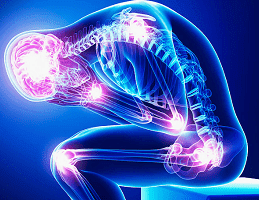Assessing pain in non-verbal patients
Published on July 11, 2021
Updated on April 25, 2024
Published on July 11, 2021
Updated on April 25, 2024

Table of Contents
Pain is a subjective sensation affecting a person’s physical, emotional, and spiritual well-being. While pain can be measured objectively by using vital signs such as temperature, pulse, blood pressure, and respiration count, these indicators may not reflect the true intensity of pain that a person is experiencing. This is especially true for non-verbal patients who cannot communicate their pain verbally. Non-verbal patients may include those with advanced dementia, terminal illness, or other conditions that impair their speech. In this article, I will discuss the importance of assessing pain in non-verbal patients, the tools and methods that can be used, and the benefits of providing adequate pain relief for these patients.
Assessing pain in nonverbal patients is challenging but essential for nurses and other healthcare providers. Pain can negatively affect a person’s quality of life, reducing functionality, increasing suffering, and prolonging the dying process. Therefore, it is important to identify and treat pain in nonverbal patients as effectively as possible.
One way to assess pain in non-verbal patients is to use standardized pain scales designed for this purpose. Several pain scales are available, such as the Bolton Pain Assessment Tool, the FLACC Pain Scale, the NVPS Pain Scale, and the PAINAD Pain Scale. These scales use observable behaviors and physiological signs to estimate the pain level a non-verbal patient is experiencing. For example, the PAINAD Pain Scale uses five criteria: breathing, vocalization, facial expression, body language, and consolability. Each criterion is rated from 0 to 2, and the total score ranges from 0 to 10, with higher scores indicating more pain.
Nurses and other health care providers should learn at least one of these pain scales and use it consistently to assess pain in non-verbal patients. By doing so, they can achieve two main goals: 1) to determine the patient’s level of pain and work with the providers on a treatment plan, and 2) to educate the patient’s family and caregivers on how to recognize and report pain in the patient and how to administer the appropriate medications according to the treatment plan.
To illustrate the importance of assessing pain in non-verbal patients, I will share a case study from my experience as a hospice nurse. I cared for a breast cancer patient in her 60s who was being cared for by a parent in their 80s. One family member suspected that the patient was in pain because she was groaning, but the primary caretaker disagreed. When I arrived, I observed that the patient was groaning loudly and continuously, had labored breathing with a respiration count of 30, had a heart rate of 124, and was hypotensive at 84/40. Using the PAINAD Pain Scale, I rated her pain as 9/10, confirmed by our software system. I explained to the family how I assessed the patient’s pain and why it was important to treat it. I obtained their permission to give the patient pain medication to make her comfortable. After the medication was given, the patient’s groaning and breathing eased, her heart rate and blood pressure stabilized, and she appeared more relaxed. I also reinforced the need to stay on top of the patient’s pain management and the consequences of untreated pain.
Pain is a subjective sensation that can significantly impact a person’s quality of life. Non-verbal patients who cannot express their pain verbally are at risk of having their pain underrecognized and undertreated. Therefore, it is vital to assess pain in non-verbal patients using standardized pain scales and to provide adequate pain relief for them. By doing so, nurses and other health care providers can improve the physical, emotional, and spiritual well-being of non-verbal patients and their families.
Pain Assessment in Hospitalized Older Adults With Dementia and Delirium
Pain Assessment in Dementia – International Association for the Study of Pain (IASP)
Pain Assessment in People with Dementia: AJN The American Journal of Nursing
Pain Assessment in Advanced Dementia Scale (PAINAD) – MDCalc
Uncontrolled Pain and Risk for Depression and Behavioral Symptoms in Residents With Dementia
Pain Assessment and Pharmacologic Management
Adult Nonverbal Pain Scale (NVPS) Tool for pain assessment
Assessing pain in patients with cognitive impairment in acute care
Pain Assessment in Advanced Dementia Scale (PAINAD)
Pain Assessment in Non-Communicative Adult Palliative Care Patients
Pain Assessment in People with Dementia
Tools for Assessment of Pain in Nonverbal Older Adults with Dementia: A State-of-the-Science Review
Understanding the physiological effects of unrelieved pain
Untreated Pain, Narcotics Regulation, and Global Health Ideologies
Articles on Advance Directives
CaringInfo – Caregiver support and much more!
The Hospice Care Plan (guide) and The Hospice Care Plan (video series)
Surviving Caregiving with Dignity, Love, and Kindness
Caregivers.com | Simplifying the Search for In-Home Care
Geri-Gadgets – Washable, sensory tools that calm, focus, and connect—at any age, in any setting
Healing Through Grief and Loss: A Christian Journey of Integration and Recovery
📚 This site uses Amazon Associate links, which means I earn a small commission when you purchase books or products through these links—at no extra cost to you. These earnings help me keep this website running and free from advertisements, so I can continue providing helpful articles and resources at no charge.
💝 If you don’t see anything you need today but still want to support this work, you can buy me a cup of coffee or tea. Every bit of support helps me continue writing and sharing resources for families during difficult times. 💙
VSED Support: What Friends and Family Need to Know
Take Back Your Life: A Caregiver’s Guide to Finding Freedom in the Midst of Overwhelm
The Conscious Caregiver: A Mindful Approach to Caring for Your Loved One Without Losing Yourself
Everything Happens for a Reason: And Other Lies I’ve Loved
Final Gifts: Understanding the Special Awareness, Needs, and Communications of the Dying